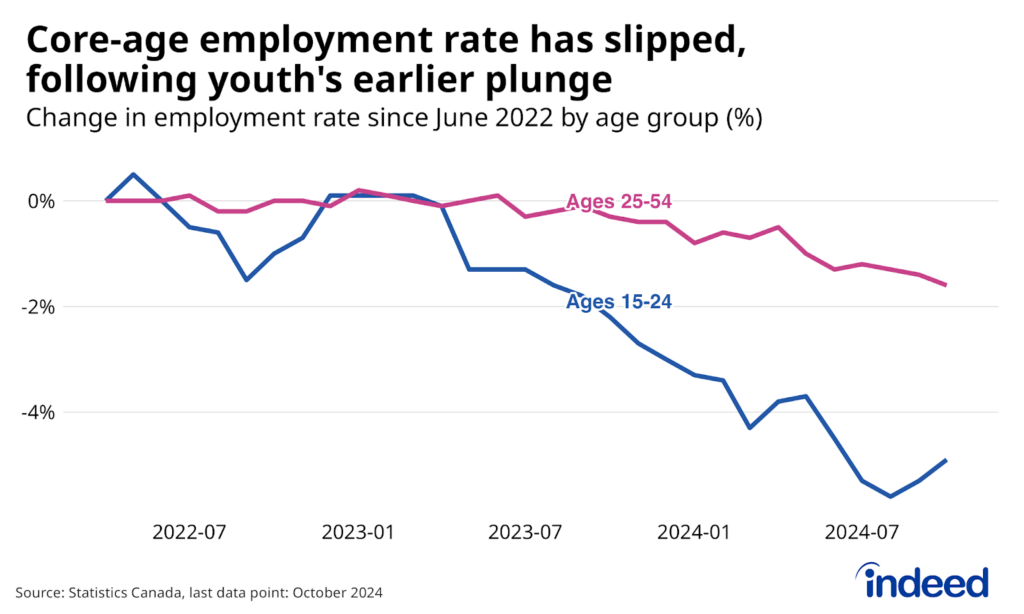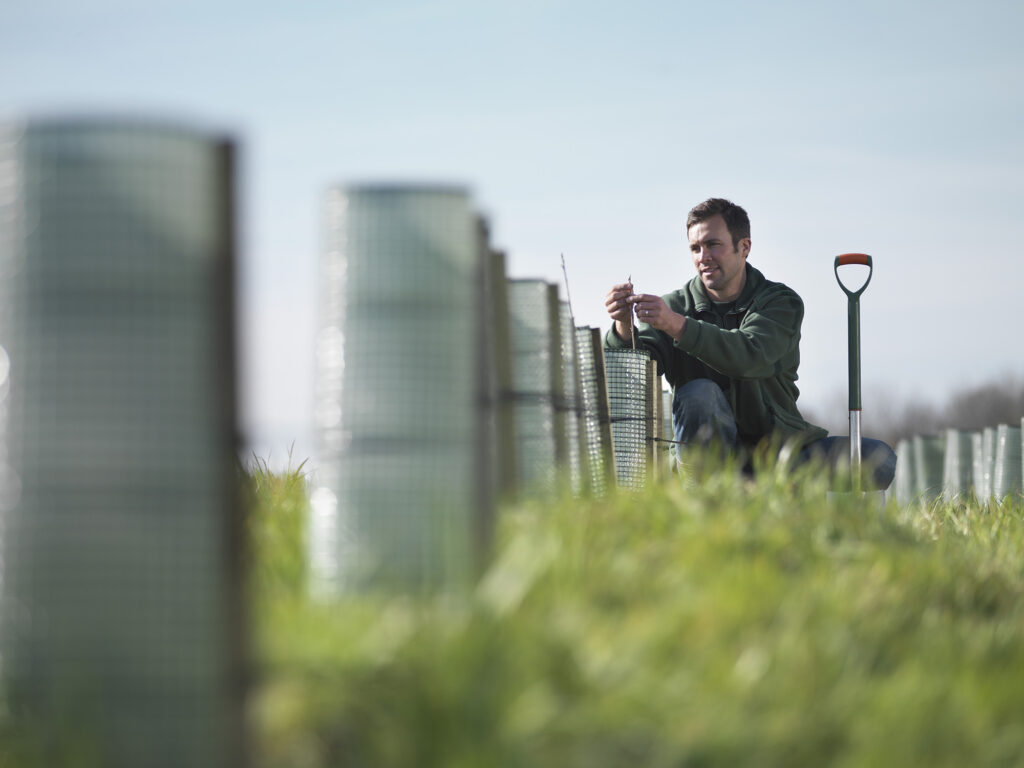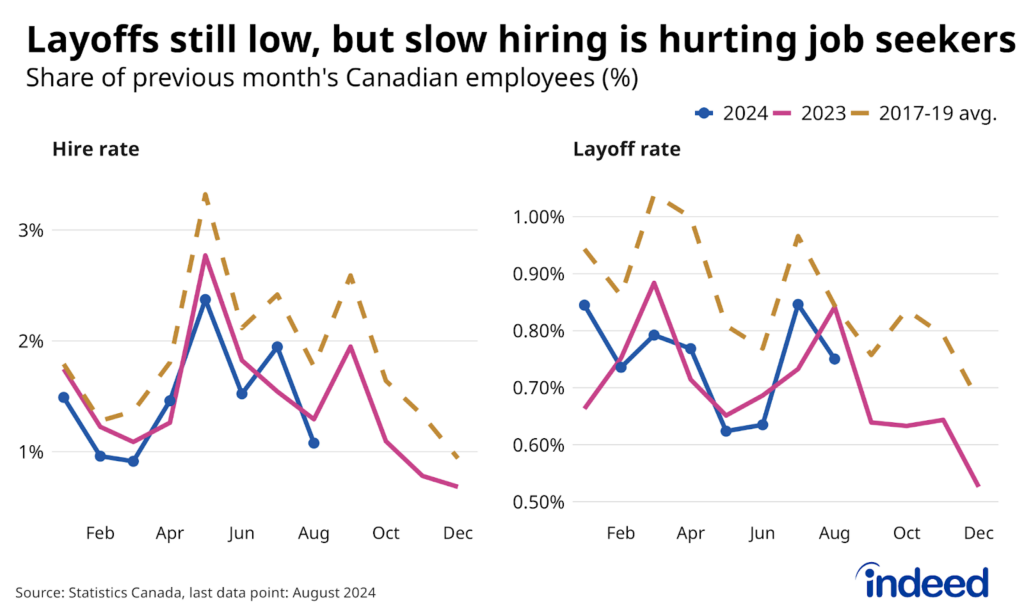Key Points
- In February 2022, 8.7% of total clicks on Canadian job postings on Indeed were made by job seekers located abroad, up 55% from 5.6% on the eve of the pandemic, led by rising interest in Asia, Africa, and Latin America.
- The foreign click share rose despite waning interest from the US, which in mid-2020 was overtaken by India as the top source of clicks from outside Canada.
- STEM-related postings get higher shares of interest from abroad than other fields, led by software development, which this February received 22% of clicks from outside Canada.
- During the pandemic, foreign click shares have grown most in occupations requiring on-site work, such as loading and stocking, and construction, in some cases, partly because domestic job seeker interest has shifted away from these positions.
Foreign migration has played a prominent role in the Canadian labour market in recent years. With targets for permanent residency admissions set to rise, questions about the ways immigration impacts the labour market, as well as the ease with which newcomers are integrating into the workforce, remain front-of-mind.
For those who want to move to Canada, having a job lined up is often important for gaining entry and improving the chance of a successful transition after arrival. Global job search platforms like Indeed can capture trends in this first stage of the migration process and shed light on how the level of foreign interest compares with domestic job seeker activity.
We track foreign job seeker interest in Canadian opportunities by examining the share of clicks on Canadian job postings on Indeed made by searchers with IP addresses outside the country (see Methodology). This shows the evolution of overall foreign job seeker interest in Canadian jobs, where job seekers are from, and the types of positions they’re interested in.
Foreign share of interest edged up before the pandemic, then surged in 2021
Before the pandemic, job seekers from abroad had a decent-sized footprint in the Canadian recruitment landscape on Indeed. They accounted for 4.7% of total clicks on Canadian postings in April 2016, rising to 5.6% by February 20, 2020. This trend was more up-and-down than steadily increasing, and included a notable jump in clicks from the US following the 2016 presidential election.
When the pandemic arrived, the foreign share of total clicks swung wildly. The share surprisingly jumped at the onset of the crisis, not because of surging international interest itself, but rather because foreign job seekers remained relatively active compared with domestic job seekers. The foreign share fluctuated over the rest of 2020, but stayed elevated. Despite tighter restrictions on international travel, interest from abroad held up relatively well, perhaps in anticipation of eventual reopening.
This temporary rise in foreign click share turned more durable in 2021. While earlier jumps had receded, the foreign share started rising early last year and trended higher through the rest of 2021. As of February 20, 2022, 8.7% of clicks on Canadian job postings were from abroad, up 3.1 percentage points, a 55% increase from two years earlier.
New sources of job seeker interest drove foreign click share higher
A key driver of growth in overall foreign click share was rising interest in Canadian job postings on Indeed from regions that previously had a minor presence. The importance of this growth has been magnified because job seeker interest from the US has waned, dropping from 40% of clicks from abroad in February 2017 to 22% on the eve of the pandemic, and to just 11% this past February. A similar dip took place among UK job seekers.
As the US share of foreign clicks slid from 2017 to early 2020, job seekers from India grew in importance, with their share of clicks from abroad more than doubling to 19%. Since 2020, India’s share of foreign clicks has fallen back to 17%, but interest remains elevated. India surpassed the US as the top source of foreign clicks in mid-2020, where it remains today.
Though India stands out, the rise in click share from abroad since the start of the pandemic has been broad-based. The share of foreign job seekers from a range of countries has jumped in the past two years. That includes countries in Asia besides India, such as the Philippines, Hong Kong, and Bangladesh; in Africa, and especially North Africa; and in Latin America and the Caribbean. At the same time, job seeker interest from France has held strong. Overall, in keeping with Canadian immigration trends in general, foreign interest in Canadian job postings on Indeed has grown increasingly diverse.
STEM job postings continue to have highest foreign click shares
This past February, nine of the ten fields with the highest share of clicks on job postings from abroad were in STEM fields (science, technology, engineering, and mathematics). Agriculture and forestry was the one exception. Software development stood at the top, in line with previous years, with 22% of clicks on postings in the field coming from outside Canada. Other areas of tech and engineering also continued to receive relatively high levels of foreign interest ranging from 14% to 19% of clicks.
Both global and domestic factors explain why foreign job seekers have an outsized footprint in clicks on Canadian STEM job postings. Tech workers, for instance, can enter Canada more easily than others through programs like Global Talent Stream. In addition, the advantage of those with professional backgrounds like engineering under the Express Entry points system probably boosts the popularity of these jobs abroad. Meanwhile, only a portion of Canadian job seekers have the skills to enter these fields, and some of them might look to the US for higher-paying opportunities.
In-person jobs see fastest foreign click share growth
While they don’t match STEM-related job postings, occupations that require in-person work have grown fastest in foreign click share since the start of the pandemic. The share of clicks from abroad on several manual labour-related fields more than doubled from February 2020 to February 2022, including loading and stocking, cleaning and sanitation, construction, and manufacturing. Some in-person services like food and retail also saw sharp increases in foreign click share from relatively low levels. Personal care and home health also stands out, consistent with policies in provinces like Quebec to expand the number of foreign workers in the field.
Foreign click shares still rose, but by substantially less, across a range of higher-paying, remote-friendly areas, including some that had already received high levels of interest from abroad before the pandemic. These included the three sectors where foreign click share grew least over the past two years: mechanical engineering, scientific research and development, and software development.
Shift in foreign interest is interacting with other labour market trends
The expanded footprint of foreign job seekers in Canada on Indeed highlights the probable importance global migration will continue to play in the labour market in the years ahead, especially as international travel relaxes.
High levels of foreign interest in STEM fields has probably already contributed to rapid employment growth in professional occupations in the natural and applied sciences in recent years. At the same time, hourly wages in these occupations haven’t grown particularly quickly, tracking closer to the economy-wide trend instead.
Meanwhile, the jump in foreign click share across a range of non-remote occupations raises the question of how this might affect opportunities and wages for domestic job seekers. For instance, in the UK, posted wages on Indeed for occupations where EU nationals previously accounted for an elevated share of the workforce have increased more than for others. Could greater foreign job seeker interest in certain roles do the reverse in Canada? Trends in Canadian wage growth in the coming year will help provide an answer.
Importantly though, a number of the more common occupations where foreign click share has grown most are also areas where hiring conditions have become relatively tighter since the start of the pandemic, including cleaning and sanitation, loading and stocking, and construction. One reason is that domestic job seeker interest has generally shifted away from a range of lower-wage, in-person occupations. The result has been that overall relative clicks per posting have declined in several larger areas where the share of clicks from abroad has grown especially quickly.
Lastly, there’s the question of what elevated foreign job seeker interest means for the ease that newcomers experience integrating into the Canadian labour market. Employment rates of recently landed immigrants to Canada bounced back quickly in 2020 owing to a drop in the new immigrant population. Significantly though, new immigrant employment rates continued to rise in 2021 even as their numbers rebounded, a trend which could be contributing to the increase in foreign click share. Nonetheless, the share of employed recent newcomers ages 25 to 54 still lags other groups. This suggests potentially further room for improvement, that could help continue Canada’s already solid pandemic labour market recovery.
Methodology
We assess foreign job seeker interest in Canada by tracking the share of total clicks on Indeed job postings located in Canada by job seekers with IP addresses located outside of Canada. Job seekers whose location could not be determined were removed from the analysis. All data in the post reflect seasonally adjusted weighted 28-day moving averages.






